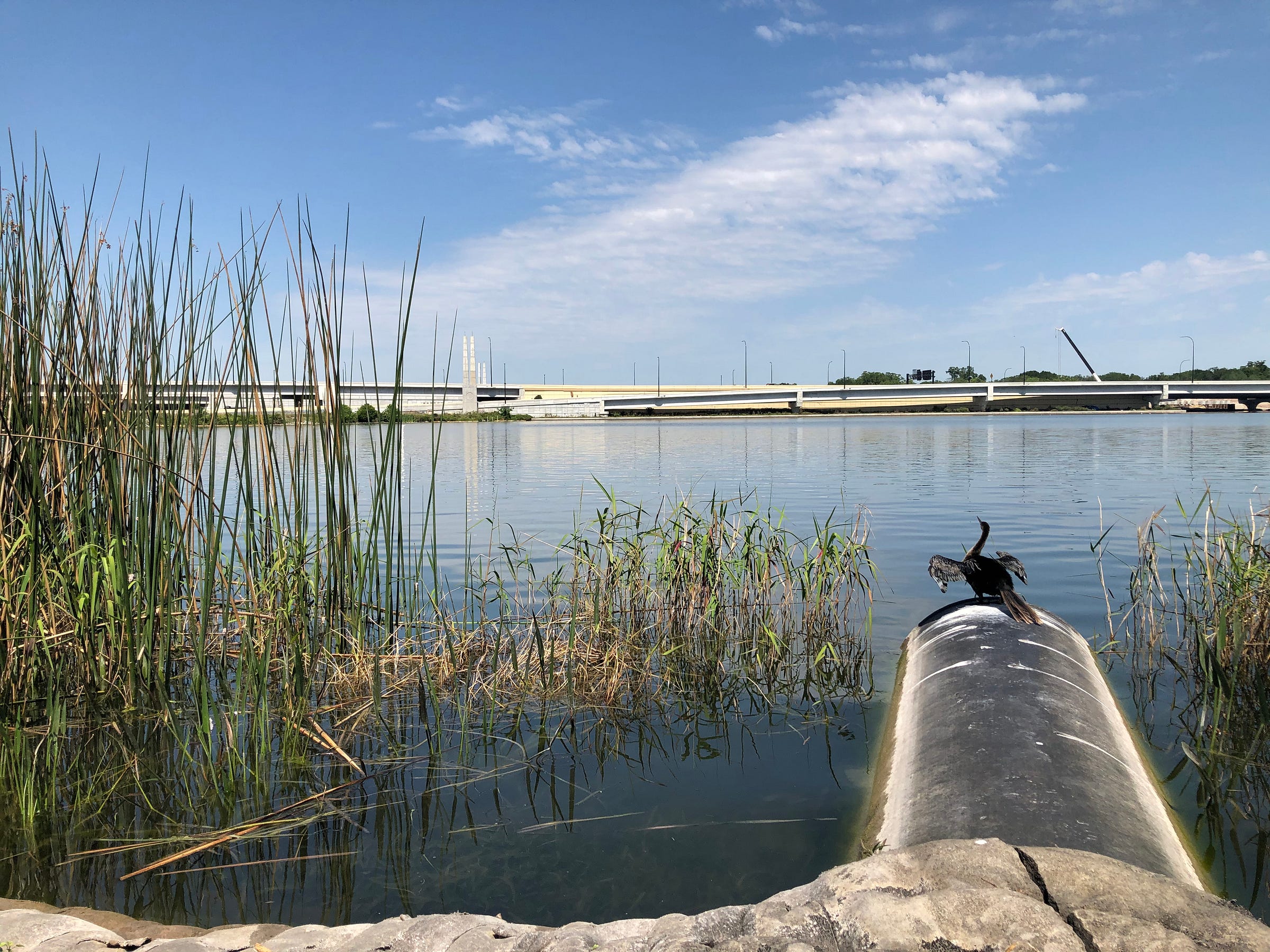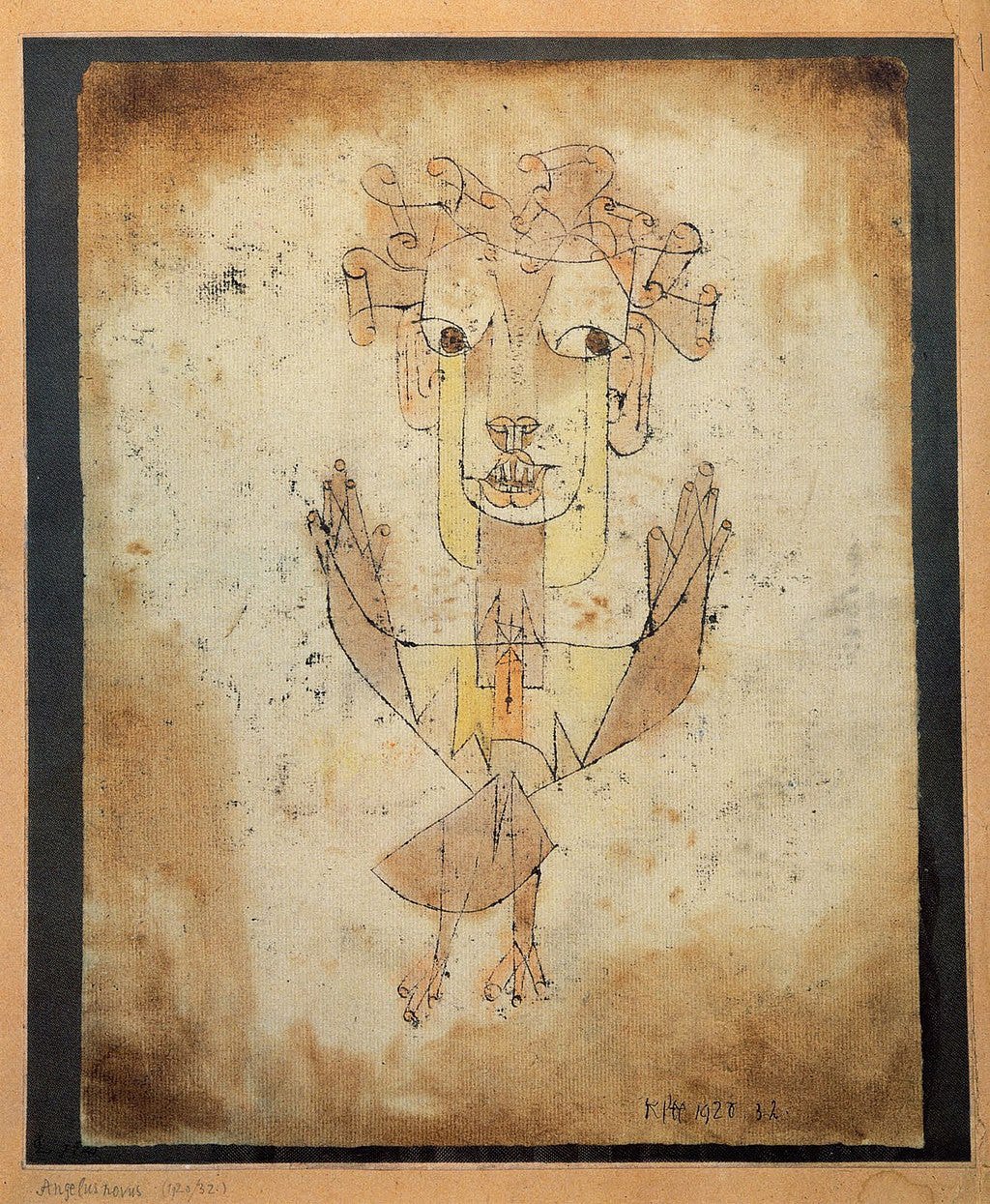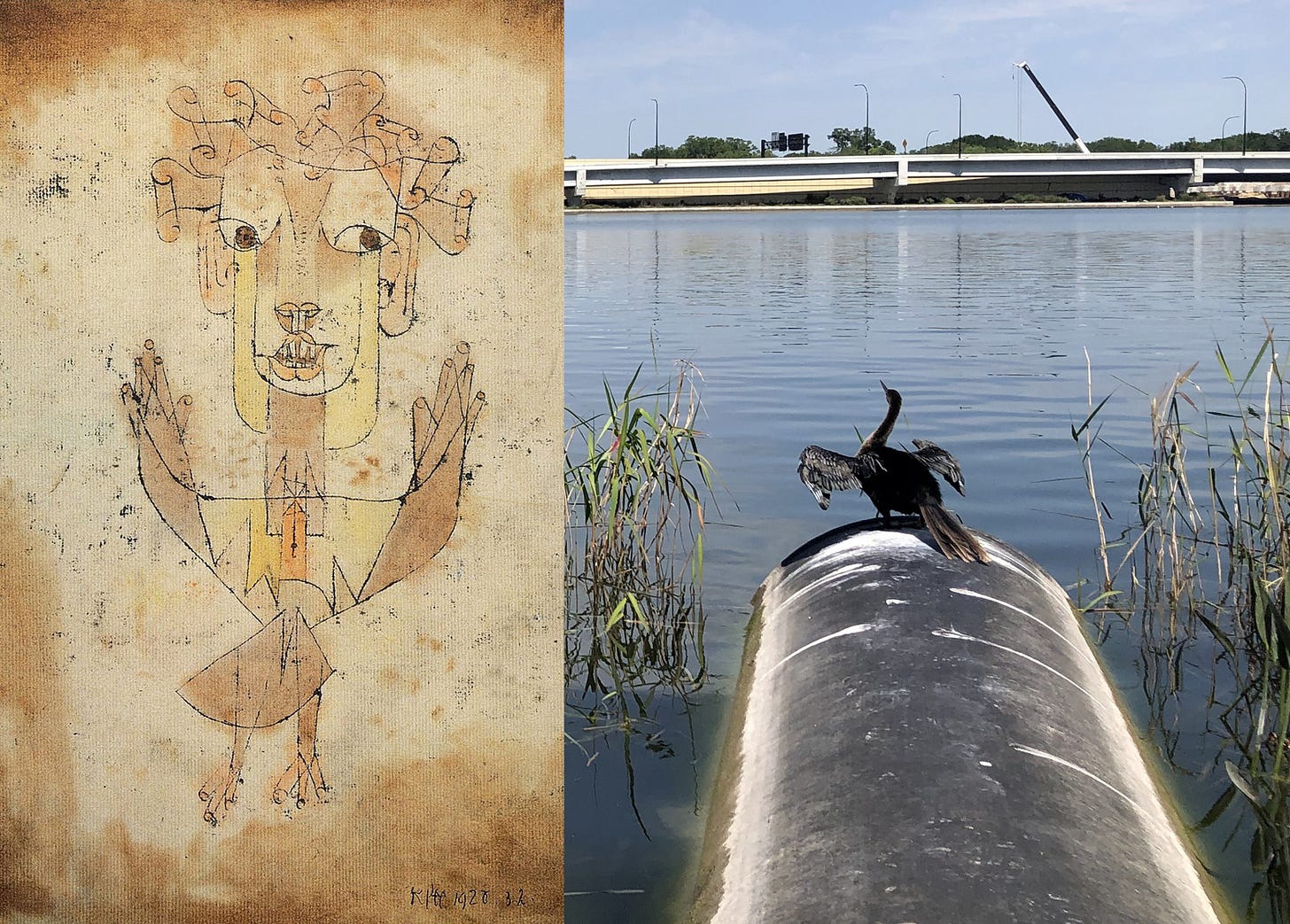In March 2020, in order to counteract the new stasis of daily life and to distract myself from the uncertain future, I walked from Colonialtown to the northern edge of downtown. At its intersection with Marks Street, I stood in the middle of Magnolia Ave, staring down the long wide road into the city center, where the skyline appeared in miniature at the vanishing point, literally standing in the center lane, not a soul or a car on the road. The feeling of lockdown was still fresh, the empty road an eerie portent. Too eerie. Apocalyptically eerie. I walked away from downtown and toward Lake Ivanhoe.
On my first visit to Lake Ivanhoe, shortly after moving to Orlando many years ago, I had approached east from Virginia Drive, which dead-ends into the lake. A lush wall of towering trees curtained the far shore. It seemed as if I’d reached the city’s outer limit and that everything beyond was wilderness. In reality the trees masked the interstate that sliced the lake in two and muted the drone of traffic to create this idyllic pocket of space.
In 2020, my view from the south bank was of the gray interstate laid bare like a fossilized spine, the trees removed to accommodate more lanes for the I-4 Ultimate project (whose mission to alleviate traffic, an urbanist friend of mine once quipped, was like dealing with a beer belly by purchasing a bigger belt). And yet, given the pandemic circumstances, the din of nature had replaced the white noise of traffic and the only things stirring were the bulrushes along the lakeshore. If I closed my eyes, I could easily imagine the land as it once was, the highway hidden by trees. I could also imagine a future where nature reclaimed the road entirely. Peaceful but bleak. This apocalyptic vision felt even more possible when an anhinga swooped down to perch on a drainage pipe jutting from the bank.
I don’t have a strong internal monologue, and so when the anhinga landed I was struck by one of the free-associative thoughts my brain is susceptible to: sometimes these are useful, sometimes clever, sometimes it’s just the melody to a TV jingle from the 1980s. This time, watching the anhinga unfurl its wings, I thought: the angel of history. I knew the phrase was Walter Benjamin’s, but didn’t remember the full context:
A Klee painting named Angelus Novus shows an angel looking as though he is about to move away from something he is fixedly contemplating. His eyes are staring, his mouth is open, his wings are spread. This is how one pictures the angel of history. His face is turned toward the past. Where we perceive a chain of events, he sees one single catastrophe which keeps piling wreckage and hurls it in front of his feet. The angel would like to stay, awaken the dead, and make whole what has been smashed. But a storm is blowing in from Paradise; it has got caught in his wings with such a violence that the angel can no longer close them. The storm irresistibly propels him into the future to which his back is turned, while the pile of debris before him grows skyward. This storm is what we call progress.
Benjamin is critiquing the idea of progress as a force that has no means to stop and address the catastrophes and injustices of the past. Though I was not thinking about this at the time, standing there on the south bank of Lake Ivanhoe, the past was all around. I was standing possibly on – or at least near – the original gateway to Orlando, the “old fort road” where US soldiers marched to and from Fort Gatlin during the Seminole Wars. In the following years, after forcing the Seminole father south amid a campaign of “Indian removal,” the first white settlers began to populate the area around Lake Ivanhoe. Around 1849, a few Seminole-War veterans took up residence, building homes and farms. So did James Gamble Speer, the city founder credited with giving Orlando its name (in one version of the story), whose enslaved laborers planted cotton on Ivanhoe’s banks until the Civil War left that industry in ruins and a new boom blanketed the land around the lake with citrus groves.
Lake Ivanhoe, however, would not receive its name until 1880, when N.F. Abbott purchased forty acres on the lake and, it is speculated, commemorated his admiration for the Sir Walter Scott novel of the same name, a novel that in its sixty prior years of existence had produced a rabid fandom (particularly among US Southerners, prompting Mark Twain to lament that the South had succumb to “Sir Walter disease”) and imbued men with a romance that sent them pioneering into Florida in search of adventure. Entrepreneurs like George Russell, who, at the height of the citrus craze, bought acres of land on Lake Ivanhoe and spurned the traditional orange grove in favor of a pinery, the pineapple being, perhaps, the most romantic of all fruits.
Russell grew local varieties as well as imports from the soon-to-be colonies of Hawaii and Puerto Rico. The Doubletree hotel, which stood fifty yards behind me, emptied of guests and not impossible to imagine overgrown by vegetation in the near future, was built atop the home Russell had built to oversee his venture. I have often imagined the jagged silhouette those bromeliads must have cut across the lakeside, only to be boxed in by heated wooden shacks after the Great Freeze of 1894. Then, in 1910, when a massive surplus busted the industry, the whole pineapple shantytown was razed in favor of Russell’s Point, a lakeside amusement park boasting boat rentals and water slides, a picnic area, and a dance hall. Before Russell sold the land to real estate investors and the area settled into the bungalow neighborhoods of the present, a citywide vote was held and the public renamed the park Joyland.
Today “Joyland” is the name of a local brewery’s IPA. George Russell is remembered, at least for the time being, in the form of Russell’s, a restaurant on the north side of Lake Ivanhoe that was once an Italian spot better known for its patio views than its food. Back in 2020, Russell’s grand opening had been delayed due to the pandemic. As I stood watching the anhinga dry its wings, I didn’t have the heart to follow the footpath in that direction, where the shoreline widened into a tree-studded park, past the workout stations and beach volleyball court, to witness the shuttered shops along Ivanhoe Row, nor was I interested in a closer look at Lake House, the blinding luxury apartment building that loomed above the treeline, throwing the sun’s glare scattershot across the lake. I’d recently read on Bungalower, a local website covering restaurants and real estate, that the developers of Lake House were planning a ground floor gastropub called The Pinery.
And so the wreckage of a single ongoing catastrophe was piled up there on the bank of Lake Ivanhoe, whether I was aware of it at the time or not. Still, history’s echoes were everywhere. Even though progress often hurls us forward with no regard for the damage it may leave in its wake, these homages to history sparkle amid the wreckage of genocide and slavery and citrus booms and amusement park busts. When I’m at my most cynical, I think of names like Russell’s and The Pinery as grotesque ploys to elevate a business’s brand using surface-level, whitewashed history. A slightly more generous view would be to say that maybe these little references that glitter amid our ongoing capitalist catastrophe might catch someone’s eye and encourage them to dig deeper into the actual history, to fight back against the winds of blind progress and move toward the past with a spirit of understanding and repair.
If I was novelizing this experience, this would be the part where the anhinga takes flight and disappears into the glare of the luxury apartment building. But from what I remember of that day, the bird didn’t move. After a while I just turned around wand walked home.







Dig this piece. Anhingas and Paul Klee deserve to be yoked more often. (What would it look like if he painted one?)
Also this kind of urban history is so valuable.